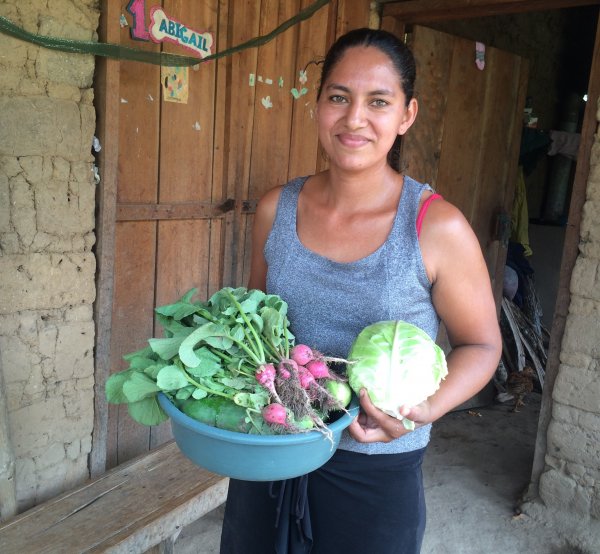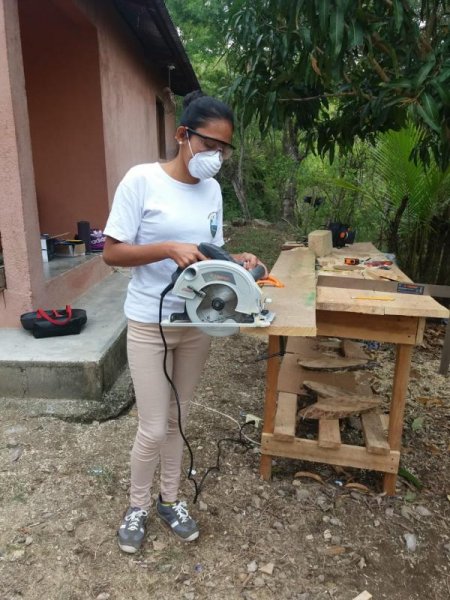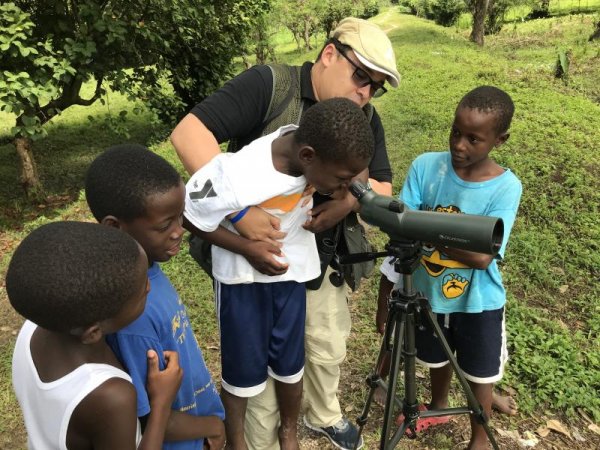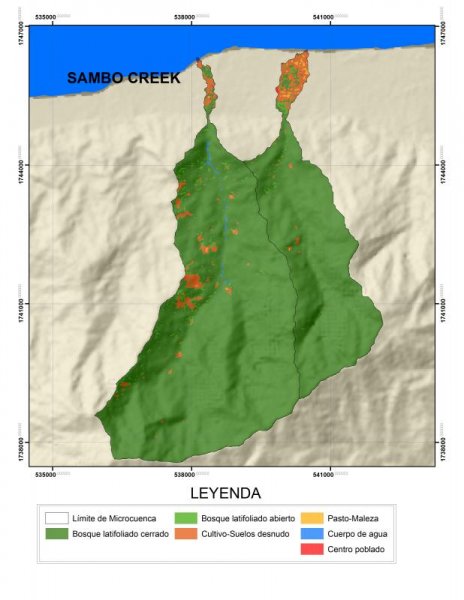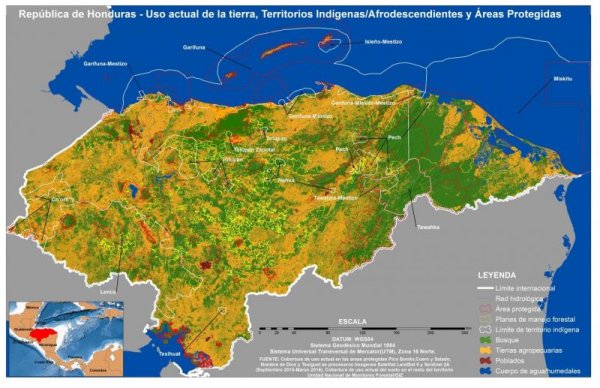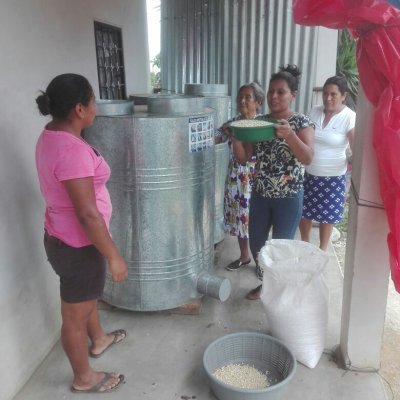‘Eyes in the Sky - Feet on the Ground’: Forest management program empowers Honduran young indigenous to control and conserve their own lands
Forests of the World, in partnership with Ceiba Tourism Chamber of Commerse, and sponsored by NDF and IDB, is working with indigenous communities in Pico Bonito, Honduras to conserve forest ecosystems through a combined focus on land rights, forest monitoring, conservation and nature-based climate change resilience management, as well as bird tourism
“You could call it a series of pilot actions that all tie together around this one beautiful diversity-rich area of forest,” says Jakob Kronik, Director of International Cooperation, Forests of the World. And, in places like Pico Bonito where intact forest areas overlap with indigenous territory, empowering people to manage their own land is proving to be the best strategy for ensuring the long-term conservation of these natural resources.
According to Kronik, the Tolupan people in the upper mountainous areas of Pico Bonito and the Garifuna on the coastal lowlands, have over time become steadily marginalised from society. This includes being pushed further onto to lower-quality land areas, and with very little voice to publicly express dissent. Dealing with climate change also remains a challenge.
Prolonged droughts unpredictable precipitation
“Their resources for handling a changing climate are weak,” Kronik explains, “and yet they increasingly have to face its negative impacts.” Honduras is one of the most vulnerable countries in the world for extreme weather events, with prolonged drought and unpredictable precipitation patterns, causing loss in crop yields. Forest health related to climate change is also being threatened by wildfire and plagued by the destructive southern pine beetle, which are known to prey on trees already weakened by climate change.
As if this wasn’t enough, the Tolupan communities, in particular, are under constant pressure from illegal loggers, miners and settlers, such as cattle ranchers, seeking to move in on what little territories and resources they still have. The authorities are often slow to act in some cases even known to take the side of the land invaders.
The program, which began in 2017 has just completed, and included climate change resilience activities such as agro-forestry, house gardens, improved access to water and mediation of natural resource conflicts, all showing success across the board. However, two parts of the program, combined remote and on-site forest surveillance and high-end bird tourism, were particularly successful in gaining the attention of young people, in some cases even inspiring them towards new career and study paths.
Remote forest surveillance - Eyes in the sky
Community-based forest monitoring using satellite images, drone technology and GIS-software became a key success factor in the program. Of course, high-speed Internet access is not a given in the deep forest; it can take as long as 24 hours to download one satellite image, and even then, the image might not tell you much.
However, partnering with specialist Danish technology company, DHI-GRAS, Kronik’s team was able to set up a process powered by Google Earth Engine using open source technology and free access, to enable young indigenous individuals, communities, and a community organisation, Guaruma, free access monitoring sites armed with just a smart phone and a laptop.
Even without aerial photographs, the GIS framework meant teams could monitor their land by accessing and analysing layers of information in the form of visualisations. For example, they could study colour and shading to detect pine beetle outbreaks.
“Pine beetles tend to move in one direction like an engine and can be cut off in their tracks if the team moves fast enough.”
Indigenous youth groups were also trained in detecting fire outbreaks or illegal logging and farming.
Monitoring from below - Feet on the ground
But monitoring just to have an idea of what’s going on isn’t enough to secure action from authorities and local actors. The next step is to pinpoint what you see on a map then establish onsite evidence. This is what Kronik calls ‘ground-truthing’.
“It’s not only in developed countries that we have problems with ‘fake news’,” he quips. “Ground-truthing stands these people on much clearer ground, with documentation and verification to support any claims.”
Not surprisingly, the authorities in these areas are also resource-constrained so it’s important for them to be as efficient and effective as possible.
“The more times our teams successfully identified what they detected from the data with the reality of what was really happening, the more credibility they could get with the authorities,” Kronik recalls.
New business opportunities through tourism
Bird watching is also gaining in popularity in the Pico Bonito, particularly among western tourists with bucket lists that include ticking the box on rare bird sightings. There are various species of Kolibri – hummingbird – that are not only native to Honduras, but also endemic only to particular tracts of this forest, and found nowhere else in the world. This makes for a coveted destination, and the growing number of visitors need local guides with legitimate local knowledge, who can navigate the terrain, and ideally spot the birds.
In partnership with La Ceiba Tourism and the Honduran Chamber of Tourism the program rolled out a training course, which was ideal for local youth. A total of 40 local Youth Bird- tourism guides were trained and are now linked to tourism operators and booking systems. The birdwatching is also building into different portals – like puma tracking, white-water rafting and other ways for visitors to get safely into the local wild nature.
A more dignified future for young people
Whether it is mastering new surveillance technologies or training as local guides, both open doors for young people that lead them back to their own communities. It means they don’t have to move away to the cities but can still go back and forth.
“Through programs like these, young indigenous people have better access to resources and a chance for more dignified lives in their communities as well as the chance to move among many different worlds".
Kronik himself is also moving a lot. When he is not in the field, he is at home in Denmark, and deeply into global climate negotiations. Kronik sees carbon-rich ecosystems like the dense forests of Honduras as a huge part of the climate solution worldwide.
“Keeping those forests will help us meet the challenge both of the global climate crisis and the biodiversity crisis,” Kronik asserts. “And we want to mix this with solving the inequality crisis that we also see on the ground there.”

